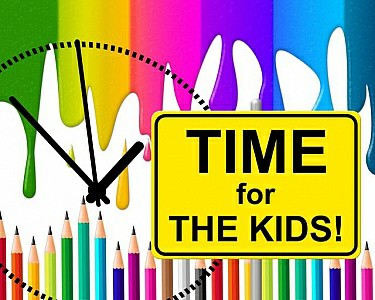[顶嘴是个好习惯,美国爸爸如何教孩子从小懂得为自己说话]有孩子的人,一定对这个场景不陌生:女儿5岁时,我曾带她去银行柜台取款,当时她在旁边等得百无聊赖,为了让我早点走,竟开始大发脾气,大吼大叫,引得旁边两位老奶奶侧目——她们一定在想,...+阅读
A Concise History of American Literature
What is literature?
Literature is language artistically used to achieve identifiable literary qualities and to convey meaningful messages.
Chapter 1 Colonial Period
I. Background: Puritanism
1. features of Puritanism
(1) Predestination: God decided everything before things occurred.
(2) Original sin: Human beings were born to be evil, and this original sin can be passed down from generation to generation.
(3) Total deprity
(4) Limited atonement: Only the “elect” can be sed.
2. Influence
(1) A group of good qualities – hard work, thrift, piety, sobriety (serious and thoughtful) influenced American literature.
(2) It led to the everlasting myth. All literature is based on a myth – garden of Eden.
(3) Symbolism: the American puritan’s metaphorical mode of perception was chiefly instrumental in calling into being a literary symbolism which is distinctly American.
(4) With regard to their writing, the style is fresh, simple and direct; the rhetoric is plain and honest, not without a touch of nobility often traceable to the direct influence of the Bible.
II. Overview of the literature
1. types of writing
diaries, histories, journals, letters, trel books, autobiographies/biographies, sermons
2. writers of colonial period
(1) Anne Bradstreet
(2) Edward Taylor
(3) Roger Williams
(4) John Woolman
(5) Thomas Paine
(6) Philip Freneau
III. Jonathan Edwards
1. life
2. works
(1) The Freedom of the Will
(2) The Great Doctrine of Original Sin Defended
(3) The Nature of True Virtue
3. ideas – pioneer of transcendentalism
(1) The spirit of revivalism
(2) Regeneration of man
(3) God’s presence
(4) Puritan idealism
IV. Benjamin Franklin
1. life
2. works
(1) Poor Richard’s Almanac
(2) Autobiography
3. contribution
(1) He helped found the Pennsylvania Hospital and the American Philosophical Society.
(2) He was called “the new Prometheus who had stolen fire (electricity in this case) from heen”.
(3) Everything seems to meet in this one man – “Jack of all trades”. Herman Melville thus described him “master of each and mastered by none”.
Chapter 2 American Romanticism
Section 1 Early Romantic Period
What is Romanticism?
An approach from ancient Greek: Plato
A literary trend: 18c in Britain (1798
1832)
Schlegel Bros.
I. Preview: Characteristics of romanticism
1. subjectivity
(1) feeling and emotions, finding truth
(2) emphasis on imagination
(3) emphasis on individualism – personal freedom, no hero worship, natural goodness of human beings
2. back to medieval, esp medieval folk literature
(1) unrestrained by classical rules
(2) full of imagination
(3) colloquial language
(4) freedom of imagination
(5) genuine in feelings: answer their call for classics
3. back to nature
nature is “breathing living thing” (Rousseau)
II. American Romanticism
1. Background
(1) Political background and economic development
(2) Romantic movement in European countries
Derivative – foreign influence
2. features
(1) American romanticism was in essence the expression of “a real new experience and contained “an alien quality” for the simple reason that “the spirit of the place” was radically new and alien.
(2) There is American Puritanism as a cultural heritage to consider. American romantic authors tended more to moralize. Many American romantic writings intended to edify more than they entertained.
(3) The “newness” of Americans as a nation is in connection with American Romanticism.
(4) As a logical result of the foreign and native factors at work, American romanticism was both imitative and independent.
III. Washington Irving
1. several names attached to Irving
(1) first American writer
(2) the messenger sent from the new world to the old world
(3) father of American literature
2. life
3. works
(1) A History of New York from the Beginning of the World to the End of the Dutch Dynasty
(2) The Sketch Book of Geoffrey Crayon, Gent. (He won a measure of international recognition with the publication of this.)
(3) The History of the Life and Voyages of Christopher Columbus
(4) A Chronicle of the Conquest of Granada
(5) The Alhambra
4. Literary career: two parts
(1) 1809
1832
a. Subjects are either English or European
b. Conservative love for the antique
(2) 1832
1859: back to US
5. style – beautiful
(1) gentility, urbanity, pleasantness
(2) oiding moralizing – amusing and entertaining
(3) enveloping stories in an atmosphere
(4) vivid and true characters
(5) humour – smiling while reading
(6) musical language
IV. James Fenimore Cooper
1. life
2. works
(1) Precaution (1820, his first novel, imitating Austen’s Pride and Prejudice)
(2) The Spy (his second novel and great success)
(3) Leatherstocking Tales (his masterpiece, a series of five novels)
The Deerslayer, The Last of the Mohicans, The Pathfinder, The Pioneer, The Prairie
3. point of view
the theme of wilderness vs. civilization, freedom vs. law, order vs. change, aristocrat vs. democrat, natural rights vs. legal rights
4. style
(1) highly imaginative
(2) good at inventing tales
(3) good at landscape deion
(4) conservative
(5) characterization wooden and lacking in probability
(6) language and use of dialect not authentic
5. literary achievements
He created a myth about the formative period of the American nation. If the history of the United States is, in a sense, the process of the American settlers exploring and pushing the American frontier forever westward, then Cooper’s Leatherstocking Tales effectively approximates the American national experience of adventure into the West. He turned the west and frontier as a useable past and he helped to introduce western tradition to American literature.
Section 2 Summit of Romanticism – American Transcendentalism
I. Background: four sources
1. Unitarianism
(1) Fatherhood of God
(2) Brotherhood of men
(3) Leadership of Jesus
(4) Salvation by character (perfection of one’s character)
(5) Continued progress of mankind
(6) Divinity of mankind
(7) Deprity of mankind
2. Romantic Idealism
Center of the world is spirit, absolute spirit (Kant)
3. Oriental mysticism
Center of the world is “oversoul”
4. Puritanism
Eloquent expression in transcendentalism
II. Appearance
1836, “Nature” by Emerson
III. Features
1. spirit/oversoul
2. importance of individualism
3. nature – symbol of spirit/God
garment of the oversoul
4. focus in intuition (irrationalism and subconsciousness)
IV. Influence
1. It served as an ethical guide to life for a young nation and brought about the idea that human can be perfected by nature. It stressed religious tolerance, called to throw off shackles of customs and traditions and go forward to the development of a new and distinctly American culture.
2. It advocated idealism that was great needed in a rapidly expanded economy where opportunity often became opportunism, and the desire to “get on” obscured the moral necessity for rising to spiritual height.
3. It helped to create the first American renaissance – one of the most prolific period in American literature.
V. Ralph Waldo Emerson
1. life
2. works
(1) Nature
(2) Two essays: The American Scholar, The Poet
3. point of view
(1) One major element of his philosophy is his firm belief in the transcendence of the “oversoul”.
(2) He regards nature as the purest, and the most sanctifying moral influence on man, and advocated a direct intuition of a spiritual and immanent God in nature.
(3) If man depends upon himself, cultivates himself and brings out the divine in himself, he can hope to bee better and even perfect. This is what Emerson means by “the infinitude of man”.
(4) Everyone should understand that he makes himself by making his world, and that he makes the world by making himself.
4. aesthetic ideas
(1) He is a plete man, an eternal man.
(2) True poetry and true art should ennoble.
(3) The poet should express his thought in symbols.
(4) As to theme, Emerson called upon American authors to celebrate America which was to him a lone poem in itself.
5. his influence
VI. Henry Did Thoreau
1. life
2. works
(1) A Week on the Concord and Merrimack River
(2) Walden
(3) A Plea for John Brown (an essay)
3. point of view
(1) He did not like the way a materialistic America was developing and was vehemently outspoken on the point.
(2) He hated the human injustice as represented by the slery system.
(3) Like Emerson, but more than him, Thoreau saw nature as a genuine restorative, healthy influence on man’s spiritual well-being.
(4) He has faith in the inner virtue and inward, spiritual grace of man.
(5) He was very critical of modern civilization.
(6) “Simplicity…simplify!”
(7) He was sorely disgusted with “the inundations of the dirty institutions of men’s odd-fe

llow society”.
(8) He has calm trust in the future and his ardent belief in a new generation of men.
Section 3 Late Romanticism
I. Nathaniel Hawthorne
1. life
2. works
(1) Two collections of short stories: Twice-told Tales, Mosses from and Old Manse
(2) The Scarlet Letter
(3) The House of the Seven Gables
(4) The Marble Faun
3. point of view
(1) Evil is at the core of human life, “that blackness in Hawthorne”
(2) Whenever there is sin, there is punishment. Sin or evil can be passed from generation to generation (causality).
(3) He is of the opinion that evil educates.
(4) He has disgust in science.
4. aesthetic ideas
(1) He took a great interest in history and antiquity. To him these furnish the soil on which his mind grows to fruition.
(2) He was convinced that romance was the predestined form of American narrative. To tell the truth and satirize and yet not to offend: That was what Hawthorne had in mind to achieve.
5. style – typical romantic writer
(1) the use of symbols
(2) revelation of characters’ psychology
(3) the use of supernatural mixed with the actual
(4) his stories are parable (parable inform) – to teach a lesson
(5) use of ambiguity to keep the reader in the world of uncertainty – multiple point of view
II. Herman Melville
1. life
2. works
(1) Typee
(2) Omio
(3) Mardi
(4) Redburn
(5) White Jacket
(6) Moby Dick
(7) Pierre
(8) Billy Budd
3. point of view
(1) He never seems able to say an affirmative yes to life: His is the attitude of “Everlasting Nay” (negative attitude towards life).
(2) One of the major themes of his is alienation (far away from each other).
Other themes: loneliness, suicidal individualism (individualism causing disaster and death), rejection and quest, confrontation of innocence and evil, doubts over the forting 19c idea of progress
4. style
(1) Like Hawthorne, Melville manages to achieve the effect of ambiguity through employing the technique of multiple view of his narratives.
(2) He tends to write periodic chapters.
(3) His rich rhythmical prose and his poetic power he been profusely mented upon and praised.
(4) His works are symbolic and metaphorical.
(5) He includes many non-narrative chapters of factual background or deion of what goes on board the ship or on the route (Moby Dick)
Romantic Poets
I. Walt Whitman
1. life
2. work: Lees of Grass (9 editions)
(1) Song of Myself
(2) There Was a Child Went Forth
(3) Crossing Brooklyn Ferry
(4) Democratic Vistas
(5) Passage to India
(6) Out of the Cradle Endlessly Rocking
3. themes – “Catalogue of American and European thought”
He had been influenced by many American and European thoughts: enlightenment, idealism, transcendentalism, science, evolution ideas, western frontier spirits, Jefferson’s individualism, Civil War Unionism, Orientalism.
Major themes in his poems (almost everything):
equality of things and beings
divinity of everything
immanence of God
democracy
evolution of cosmos
multiplicity of nature
self-reliant spirit
death, beauty of death
expansion of America
brotherhood and social solidarity (unity of nations in the world)
pursuit of love and happiness
4. style: “free verse”
(1) no fixed rhyme or scheme
(2) parallelism, a rhythm of thought
(3) phoic recurrence
(4) the habit of using snapshots
(5) the use of a certain pronoun “I”
(6) a looser and more open-ended syntactic structure
(7) use of conventional image
(8) strong tendency to use oral English
(9) vocabulary – powerful, colourful, rarely used words of foreign origins, some even wrong
(10) sentences – catalogue technique: long list of names, long poem lines
5. influence
(1) His best work has bee part of the mon property of Western culture.
(2) He took over Whitman’s vision of the poet-prophet and poet-teacher and recast it in a more sophisticated and Europeanized mood.
(3) He has been pared to a mountain in American literary history.
(4) Contemporary American poetry, whatever school or form, bears witness to his great influence.
II. Emily Dickenson
1. life
2. works
(1) My Life Closed Twice before Its Close
(2) Because I Can’t Stop for Death
(3) I Heard a Fly Buzz – When I died
(4) Mine – by the Right of the White Election
(5) Wild Nights – Wild Nights
3. themes: based on her own experiences/joys/sorrows
(1) religion – doubt and belief about religious subjects
(2) death and immortality
(3) love – suffering and frustration caused by love
(4) physical aspect of desire
(5) nature – kind and cruel
(6) free will and human responsibility
4. style
(1) poems without titles
(2) severe economy of expression
(3) directness, brevity
(4) musical device to create cadence (rhythm)
(5) capital letters – emphasis
(6) short poems, mainly two stanzas
(7) rhetoric techniques: personification – make some of abstract ideas vivid
III. parison: Whitman vs. Dickinson
1. Similarities:
(1) Thematically, they both extolled, in their different ways, an emergent America, its expansion, its individualism and its Americanness, their poetry being part of “American Renaissance”.
(2) Technically, they both added to the literary independence of the new nation by breaking free of the convention of the iambic pentameter and exhibiting a freedom in form unknown before: they were pioneers in American poetry.
2. differences:
(1) Whitman seems to keep his eye on society at large; Dickinson explores the inner life of the individual.
(2) Whereas Whitman is “national” in his outlook, Dickinson is “regional”.
(3) Dickinson has the “catalogue technique” (direct, simple style) which Whitman doesn’t he.
Edgar Allen Poe
I. Life
II. Works
1. short stories
(1) ratiocinative stories
a. Ms Found in a Bottle
b. The Murders in the Rue Mue
c. The Purloined Letter
(2) Revenge, death and rebirth
a. The Fall of the House of Usher
b. Ligeia
c. The Masque of the Red Death
(3) Literary theory
a. The Philosophy of position
b. The Poetic Principle
c. Review of Hawthorne’s Twice-told Tales
III. Themes
1. death – predominant theme in Poe’s writing
“Poe is not interested in anything alive. Everything in Poe’s writings is dead.”
2. disintegration (separation) of life
3. horror
4. negative thoughts of science
IV. Aesthetic ideas
1. The short stories should be of brevity, totality, single effect, pression and finality.
2. The poems should be short, and the aim should be beauty, the tone melancholy. Poems should not be of moralizing. He calls for pure poetry and stresses rhythm.
V. Style – traditional, but not easy to read
VI. Reputation: “the jingle man” (Emerson)
VII. His influences
Chapter 3 The Age of Realism
I. Background: From Romanticism to Realism
1. the three conflicts that reached breaking point in this period
(1) industrialism vs. agrarian
(2) culturely-measured east vs. newly-developed west
(3) plantation gentility vs. mercial gentility
2. 1880’s urbanization: from free petition to monopoly capitalism
3. the closing of American frontier
II. Characteristics
1. truthful deion of life
2. typical character under typical circumstance
3. objective rather than idealized, close observation and investigation of life
“Realistic writers are like scientists.”
4. open-ending:
Life is plex and cannot be fully understood. It lees much room for readers to think by themselves.
5. concerned with social and psychological problems, revealing the frustrations of characters in an environment of sordidness and deprity
III. Three Giants in Realistic Period
1. William Dean Howells – “Dean of American Realism”
(1) Realistic principles
a. Realism is “fidelity to experience and probability of motive”.
b. The aim is “talk of some ordinary traits of American life”.
c. Man in his natural and unaffected dullness was the object of Howells’s fictional representation.
d. Realism is by no means mere photographic pictures of externals but includes a central concern with “motives” and psychological conflicts.
e. He condemns novels of sentimentality and morbid self-sacrifice, and oids such themes as illicit love.
f. Authors should minimize plot and the artificial ordering of the sense of something “desultory, unfinished, imperfect”.
g. Characters should he solidity of specification and be real.
h. Interpreting sympathetically the “mon feelings of monplace people” was best suited as a technique to express the spirit of America.
i. He urged writers to winnow tradition and write in keeping with current humanitarian ideals.
j. Truth is the highest beauty, but it includes the view that morality perates all things.
k. With regard to literary criticism, Howells felt that the literary critic should not try to impose arbitrary or subjective evaluations on books but should follow the detached scientist in accurate deion, interpretation, and classification.
以下为关联文档:
美国孩子学英语的“两个法宝”,中国孩子一样可以get到!美国孩子到底是怎么学英语的?那么我们今天就来聊一聊所有父母都最感兴趣的一个话题——美国孩子如何学英语?英语是美国孩子的母语,不过就像中国孩子学中文一样,虽然他们每天的日...

明明是熊孩子,却养出了好教养,美国邻居的家教秘诀原来在这里..憨憨球队里有一个美国小孩叫Did,每次集训的时候,他是队里最能疯最能玩的一个,可是甭管他玩的多High,只要妈妈一说话,“Did, it's time to go home.”,他就依依不舍地跟队友和教练...

为什么美国孩子更自信说到美国的孩子,你的脑海里会不会自动弹出这些形容词:自信、笑起来很灿烂、很快乐、很自由……确实,这是很多美国孩子的共同点。著名画家、作家陈丹青曾经说过这样一句话:“走在...

美国大学本科申请到底看什么众所周知,美国向来是留学兵家必争之地,申请美国本科的人数也是日趋增多。不过,很多学生一提到美国本科申请就一脸懵,不知道要做哪些准备。那么,美国本科申请到底看什么?满足那些...

为避免孩子乱花钱,美国财商专家给出的52个实用建议春节的时候孩子们都很开心,因为一波波压岁钱正在赶来。可是不少家长朋友却纠结了:一方面,压岁钱的归属权一定是孩子自己,另一方面又担心孩子不会合理规划和使用压岁钱。财商专家...

当孩子遇到挫折,美国父母是怎样做的挫折教育,不一定要把孩子送去一个艰苦的地方,更不是靠去某个培训班。生活中,孩子们就经常会遇到各种挫折……面对挫折,怎样才能让孩子勇于挑战?来看看美国父母的做法吧。父母适时...

美国埃及韩国旅游英语口语旅游英语口语:国外之游 美国A: Were now in Washington D.C., the capital city of America.我们现在在华盛顿特区,美国的首都。B:I think this citys name must be connected...

在美国生孩子需要多少钱美国生孩子最新政策现在国家的经济水平是越来越发达了,而国家富裕起来,人民也富裕起来,现在的经济发展是非常快的,很多聪明的人把握到了这样的商机,不大不小的赚了一笔,勉勉强强的步入了土豪的行列,有...
美国的早期学习标准2005年起,全美学前教育研究会(National institute For Early Education Research)在其每年的发布的全国及各州学前教育发展状况年度报告中,开始用 早期学习标准 代替 课程标准...



